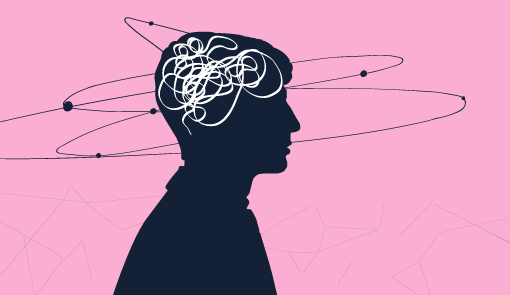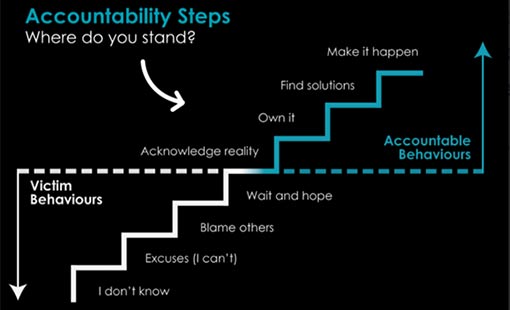Sean Spurgin shares some great advice for understanding mindsets and supporting service people to improve performance.
Thinking About Our Thinking Is Critical
- How do I think? What mindset am I adopting?
- When faced with an event, what do I typically think?
- What happens next?
- What do I feel in response to these thoughts?
- What do I do in reaction to these thoughts and feelings?
Asking ourselves these questions is important because, as human beings, we are susceptible to “distorted thinking”. Our unconscious beliefs, biases, habits and patterns can evoke inadequate responses and impact how we show up to conversations and events.
How we think about any situation directly influences how we behave.
Essentially, our mindset creates a lens through which we look at the world. This lens is specific to us and changes in different situations depending on the “stuff” we bring at the time.
Changing the Lens We See the World Through
A person being made redundant may see it as the end of their life – because of what happened to their father, they assume they will never work again and will have to sell everything to stay alive.
This mindset will influence their behaviour when they show up for interviews and impact on the impression they make.
A different person could see it as an opportunity to move into a new role that they love and truly excel in.
Naturally, this would drive a different behaviour and a different result.
Changing Our Blueprint
Our mindset in any given moment is an amalgam of the “blueprint” we have created throughout our lives (much of it in childhood) and through our current mental activity and physical state.
This blueprint is our map of how the world works.
This blueprint is our map of how the world works. It is made up of our experiences, values and beliefs.
These were handed down to us by our parents and have been reshaped by us throughout our lives.
If we grew up with the idea that women are more competent than men, this would shape our behaviour in situations where we have to choose between a man and a woman for a job.
We may have a high personal value around politeness and hence judge people to be good or bad based upon this value.
What is interesting (and often tricky) about our blueprint is that most of this goes on without us even knowing.
Since our mind is processing new information all the time, that information can affect our mindset.
Our mindset is rooted in our experiences from which we form our thoughts, which establishes beliefs and attitudes.
Those thoughts, beliefs and attitudes lead to certain actions, and with those actions, we have experiences.

Our thought process may affect our beliefs and, therefore, how we respond to situations.
These experiences give our mind new information to process. Our thought process may affect our beliefs and, therefore, how we respond to situations.
The cycle continues with each of our further actions or experiences.
Very few of us have ever taken the time to clarify our blueprint and make some conscious choices about how we would like it to be.
It “just is” and, as such, leads us to the belief that we see the world “as it is”. We don’t. We just see it as we see it.
Every one of us has an individual blueprint or map of the world and how it works.
Our view of the world is just our view – we mistakenly see that as “reality” and then get confused or upset when people see things differently.
Changing How We Think
We can change our thinking, change our communication, change the scripts we run in our heads, and we can change the mindset which drives our behaviour (the things we do).
That’s all you have control over anyway!
Unfortunately, most of us run on autopilot and sleepwalk through each day. Once our thoughts and emotions become habitual, they form a neural network that keeps that mindset habitually in place – keeping us, literally, on automatic.
When we’ve mastered a habit, like riding a bicycle or using new software, we don’t have to think about it much any more.
The more habitual our thoughts, the stronger the neural network and the stronger our mindset.
The neural network is in place, like a groove on a record – the more habitual our thoughts, the stronger the neural network and the stronger our mindset – regardless of whether our thoughts are positive OR negative.
These neural networks holding our mindset together have unique characteristics.
One characteristic is that they grow larger and stronger, the more repetitive our thoughts and emotions.
For example, if you are in the habit of believing you are a victim at work, you are likely to feel resentful and critical, that you are trapped, and there is nothing you can do.
You’re likely to complain to your friends about it, using it as justification why you can’t change. It becomes your “story” that you repeat to yourself over and over. You believe it.
The more you habitually do this, the stronger and larger the neural network becomes, and the weaker the mindset that you can do anything about it.
To break out of habitual patterns, we need to seek feedback from others and reappraise our beliefs and our behaviour to enable us to respond differently to the events life throws at us.
Understanding our common emotional triggers can give us a blueprint for how we typically respond to certain circumstances.
What’s also important to understand is our response. We are the only ones who can take responsibility for our actions.
You cannot behave your way out of a situation you have behaved your way into.
Stephen Covey
As Stephen Covey would say: “You cannot behave your way out of a situation you have behaved your way into.”
Changing our mindset will help shape the outcome of what we want.
Pause for thought.
Consider a time when you’ve achieved something important and a time when you haven’t:
- How has your response impacted what you achieved?
- How were you truly feeling?
- What did this make you think?
- And how did you behave as a result?
- What impact did this have on the outcome?
- What might you learn from or change?
The stories we tell ourselves and the language we use are unbelievably powerful. They create an emotional reaction in us and those around us.
The words we choose, the scripts we run in our heads, and the stories we tell directly impact our mindset and our feelings.
We are the authors of our own story!
Stop for a moment and think – what do you want your story to be? Think about what you really want to achieve right now. What’s important to you, and what does success look like?
By starting to think differently, you begin to behave differently and achieve differently.
For more on this topic, read our article: Getting Your Advisors to Turn Off Autopilot
3 Winning Contact Centre Mindsets
To start thinking differently in a way that can potentially transform your customer service, consider each of the three following mindsets.
1. Adaptability
One innate mindset that humans possess is adaptability, and while we always hear about robots one day taking over customer service, this quality differentiates us.
Being prepared to learn and adapt will be a key skill within the contact centre of the future, where calls will go beyond the boring, transactional stuff.
Yet, as humans, we can sink into the mindset of “that’s how I’ve always done it”, which limits our potential.
So, think about how you can nurture adaptability within your contact centre.
One way to do this is to share best practices across the contact centre floor, highlighting that there are better ways to do something.
The end goal is to create a culture where advisors learn from one another, adapt their behaviour and provide even better customer service.
2. Accountability
Being accountable means looking objectively at a situation and making some deliberate choices about how you will handle it. It requires a dash of empathy and genuine care to help customers or others.
Being accountable doesn’t necessarily mean we get the output that we want, or that we’re able to solve things – but it does mean we are actively choosing how we respond.
Our actions and the language we use are the ways we can demonstrate accountability.
An accountable mindset enables us to avoid falling into the disempowering patterns of blaming others or making excuses.
An accountable mindset enables us to avoid falling into the disempowering patterns of blaming others or making excuses when supporting customers with a problem.
By staying accountable, service people empower themselves to find and implement solutions to deal with problems, and – in the process – demonstrate to the customer that they care about finding solutions.
Accountable service people accept responsibility for dealing with a customer’s issue, regardless of its origins.
If it’s a problem caused by another team member or department, they avoid blaming that team in conversation with the customer. They take responsibility for feeding back what has happened to the other team after the customer interaction has ended.
With the customer, they take complete ownership for finding and implementing the right solution.
Find out where you stand in terms of accountability by checking out the following “accountability steps model”:

3. Curiosity
Openness to see things from a different perspective. Creativity, innovation and problem-solving are fuelled by curiosity.
What if we could see, do and hear this? Why does that happen? What makes this good?
Being curious is a state of mind and a very powerful way of remaining open to new information.
Instead of jumping to conclusions, it’s about staying open to the fact that there could be a different interpretation than your own.
Sometimes we make assumptions and judgements against people and what they have done – and then write the person or relationship off.
Being curious allows us to see a situation in a new way. Sometimes we make assumptions and judgements against people and what they have done – and then write the person or relationship off.
If we can be curious, we can see the world in a new, more accurate way, with a greater basis in reality.
When dealing with high numbers of customers, it is human nature to look for patterns and to categorize types of customers and issues.
While this can be helpful in some ways, it can mean we fixate on the similarities and fail to uncover and adapt to each customer’s unique differences and needs.
It can lead us to make assumptions in the early stages of customer interactions and fail to test those assumptions through idle dependencies on the probability that we are right.
Customers feel less human, less valued, and more processed “by type”.
Top-performing service people are genuinely interested in finding out more about how things are going for their customers:

Sean Spurgin
- What kinds of problems are people running into?
- Where are the gaps and opportunities?
- What needs to be done better?
Typically, they don’t need to be taught how to ask questions because it’s a natural strength. They learn to test out their assumptions without contributing to others becoming defensive.
Also, they assume the best-case scenarios about people until they know they have all the right information and facts.
Thanks to Sean Spurgin, Learning Director at Elev-8 Performance, for sharing this article with us.
For more on supporting your service people to create better customer conversations, read our articles:
- 10 Great Conversations to Have With Your Contact Centre Team
- Customer Service Skills: How to Improve Empathy, Active Listening and Knowledge
- Emotional Intelligence FAQs Answered by an Expert
Author: Robyn Coppell
Published On: 7th Jun 2021
Read more about - Customer Service Strategy, Soft Skills















